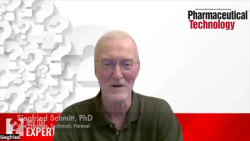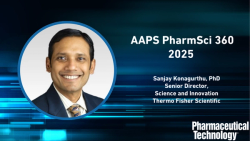
OR WAIT null SECS
- About Us
- Advertise
- Contact Us
- Editorial Info
- Editorial Advisory Board
- Do Not Sell My Personal Information
- Privacy Policy
- Terms and Conditions
© 2025 MJH Life Sciences™ , Pharmaceutical Technology - Pharma News and Development Insights. All rights reserved.
Real-World Evidence as Part of Pharmacovigilance
Siegfried Schmitt, PhD, vice-president, Technical at Parexel, answers questions on the use and benefits of real-world evidence for small-molecule and large-molecule drug development.
Q. My company just launched a novel, small-molecule drug into the market. For how long do we need to gather real-world evidence to monitor its safety and efficacy?
A. Real-world evidence is part of pharmacovigilance activities, and these are obviously mandatory for all marketed medicines. Real-world evidence collation wasn’t really required in the past but it is now, and is likely to stay given the benefits that real-world evidence delivers.
Real-world evidence for the product must be gathered for as long as you keep the product on the market. The difficulty with real-world evidence is that it may be coming from patients, who are lay persons, who interpret the effect that the product has on them. Someone may find that an effect is horrible for them; however, a different person may interpret it as slight annoyance. This is difficult for the pharmaceutical expert to really understand if the side effect is really that bad, or was it not? There is a lot of room for interpretation of what you get.
Q. My company is investigating options for a novel cell therapy for the oncology market. How can we leverage real-world evidence from our own research and from post-market drugs already on the market to choose which direction to go in?
A. If a drug developer wants to find out what is the best indication for a new or existing drug product that could be applied to adults only or to adults and adult adolescents, and so on, I think there are two aspects where real-world evidence can be beneficial.
One is to gain regulatory approval to conduct clinical trials, and hopefully at a later stage, to also get marketing approval. There is also a need to have this evidence when it comes to reimbursement at a later stage, because in the end, you don’t just want to have an approved product, you also want to be able to sell it at an appropriate price. Health technology assessments will have to be performed, and hopefully you will get a positive outcome.
Cell therapy products, by their very nature, are typically quite difficult and complex to produce and manufacture, and therefore they are often also very expensive. To get the approval to even run the trial, you have to have good reasons and good evidence. And then, of course, you may have a limited patient group market. In the end, you may have a very expensive product, and the more evidence you can provide to support your claims and the very need for the product, the better it is.
About the author
Siegfried Schmitt, PhD, is vice-president, Technical at Parexel.
Article details
Pharmaceutical Technology®
Vol. 49, No. 8
October 2025
Page: 34
Citation
When referring to this article, please cite it as Schmitt, S. Real-World Evidence as Part of Pharmacovigilance. Pharmaceutical Technology® 2025 49 (8).

 Download Issue: Pharmaceutical Technology October 2025
Download Issue: Pharmaceutical Technology October 2025

